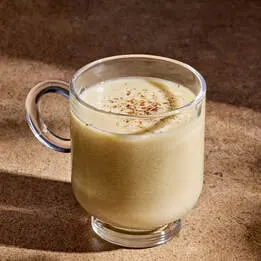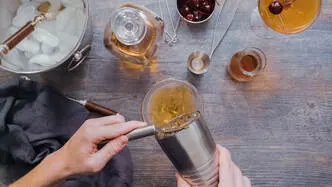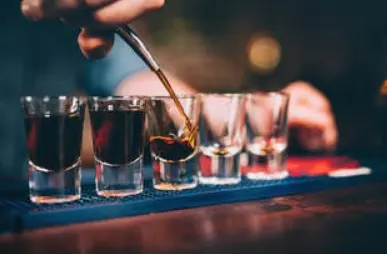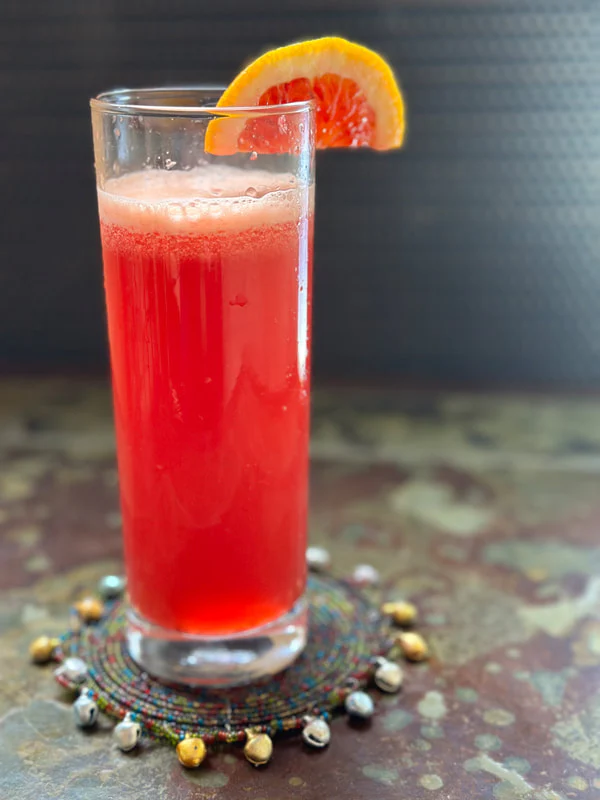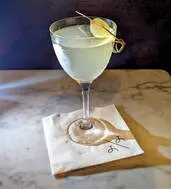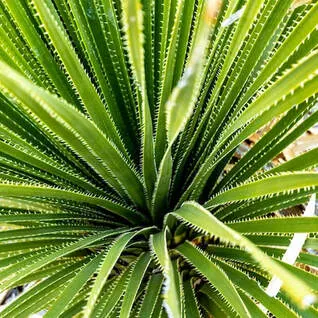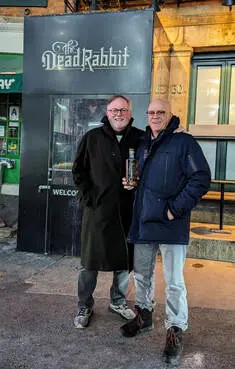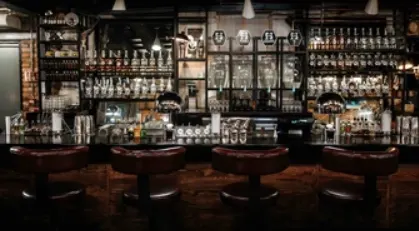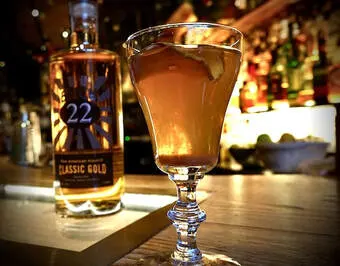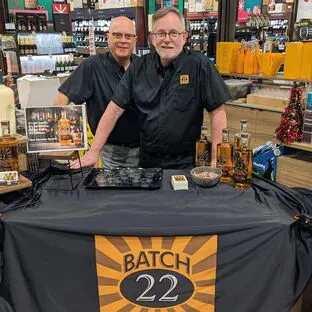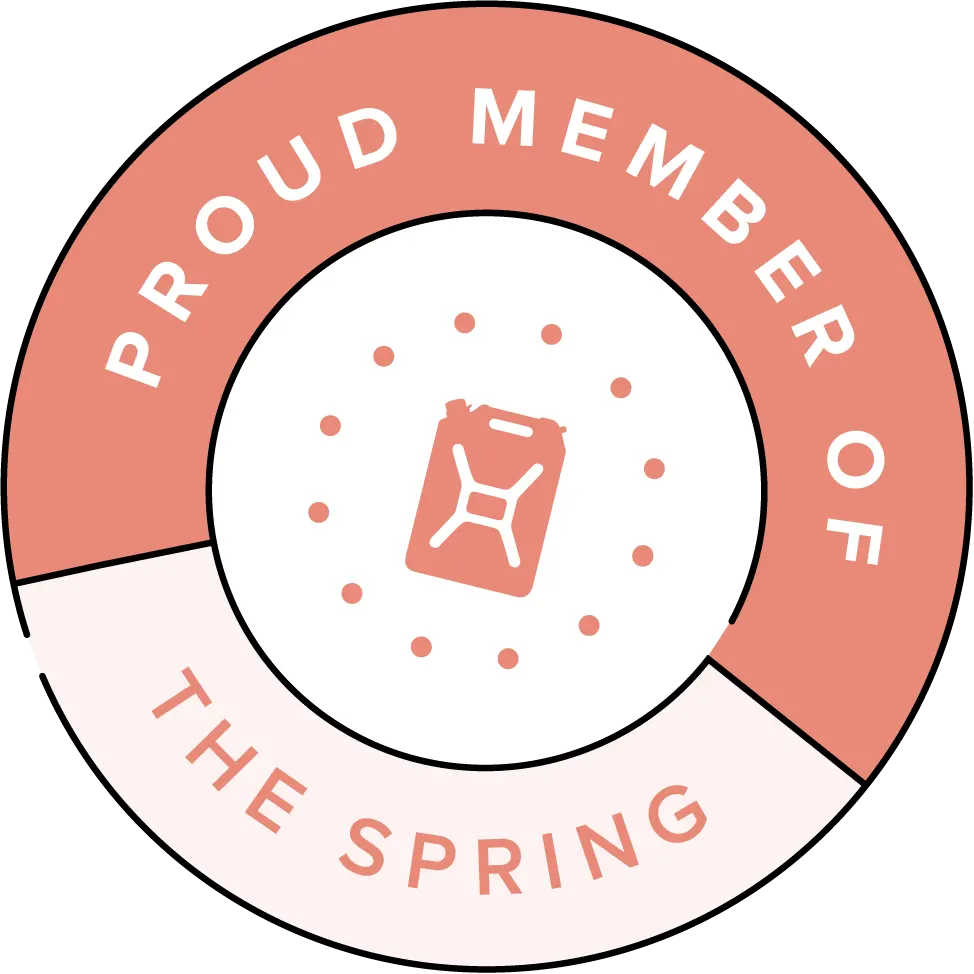A “cocktail” is technically a drink made of three main components: a spirit, something sour and/or bitter and something sweet. Even though we don’t recognize alcoholic drinks as “cocktails” before the mid-1800s or so, it doesn’t mean that people weren’t drinking alcoholic mixtures with various sweet and bitter ingredients back then. Before the birth of the “formal” cocktail, there were plenty of very popular alcoholic drink concoctions that incorporated everything from milk to cider to mulled wine as their base.
What’s considered to be the first ever cocktail? Most historians agree that it was the Sazerac, which is a blend of whisky, absinthe, bitters, and sugar. The drink was supposedly created in New Orleans in the mid-1800s and remains a popular request at bars to this day. Before the golden age of cocktails, however, there were lots of drinks from the 1800s and earlier that were part of the everyday drinking scene in America. Many of these beverages have been somewhat forgotten over time. Here are a few intriguing ones that have been obscured by history.
Cobblers
Cobblers, which are wine-based cocktails served with crushed ice, reached the height of their popularity around 1830, when the Sherry Cobbler was the most popular drink in the United States. The invention and commercial distribution of the straw at this time contributed to the drink’s quick rise in popularity.
Today, you can still find various versions of the Cobbler on bar menus around America. In many places, the Cobbler is even making a comeback, as drinkers increasingly prefer lighter-style cocktails with lower alcohol.
The late 1800s also gave us drink styles such as “syllabub,” “smash,” “sling,” “pony,” “toddy” and “nightcap.” Most bartenders today will likely know how to do a smash, sling, or toddy. But a syllabub? Probably not.
Syllabubs
The Syllabub has actually been around for 500 years, but it remains relatively unknown today. Unlike other popular drinks from the 18th and 19th centuries, such as punch and wassail, the syllabub (as a beverage) seems to have plummeted in popularity before the American cocktail made its debut. Much like its better-known cousin, the posset, the syllabub eventually evolved from a drink into a popular dessert.
The classic syllabub recipe has evolved quite a bit over the course of the last 500 years. Generally speaking, a syllabub features a base of white wine or hard cider, frothed or “whipt” with cream (or milk), egg white, and sugar and flavored with a rich variety of herbs, citrus, and spices. Wine or spirit variations often included sherry, Madeira, ale, brandy, cognac, and red wine.
It’s quite likely that you won’t find a syllabub on most American cocktail menus these days, but there is one notable place that features the drink. The Fountain Inn in Washington, D.C., serves up 17th- and 18th-century tipples and includes on its menu a syllabub made from a recipe first created in the late 1600s.
Possets
Like its cousin the syllabub, possets are typically served as holiday drinks—similar to eggnog and Glogg. As a kind of hybrid beverage, possets wind up tasting something like a mulled beer eggnog.
Possets were originally popular British hot drinks made of milk curdled with wine or ale, and often spiced, with all manner of spices and herbs, such a cinnamon, clove, nutmeg, and mace. Because of their prominent herbal and spice components, possets were often prescribed as a remedy for all kinds of afflictions.
The original posset, as a drink, eventually faded into obscurity, but the name was revived in the 19th century for a pudding-like dessert made with cream, sugar, and citrus.
Here’s a posset recipe that features the classic ingredients in their more original form—as a warm drink. Note: This preparation requires a slow cooker, an InstaPot, or something similar for best results.
Posset Cocktail (Serves 12)
This is the classic recipe. If you want to cut back on the anise, clove, and juniper components found in the Strega, you can substitute Batch 22 in whole or in part.
Ingredients
- 1/4 cup mace
- 15 allspice berries
- 1 teaspoon whole cloves
- 1 teaspoon cinnamon, freshly grated
- 16 oz. heavy cream
- 4 large eggs
- 6 oz. sugar
- 24 oz. India pale ale
- 8 oz. porter
- 3 oz. Strega liqueur (or aquavit)
- 1 oz. allspice dram
- 1 oz. Velvet Falernum
- Garnish: grated nutmeg
Directions
Combine the mace, allspice berries, cloves, and cinnamon on top of a square of cheesecloth, and use kitchen twine to tie it tightly into a spice sachet.
Turn a slow cooker on high. Add the cream and eggs and whisk until fully incorporated. When the mixture is warm, whisk in the sugar and stir until dissolved. Add the pale ale, porter, Strega (aquavit), allspice dram, Velvet Falernum, and the spice sachet. Cook on high for 2 hours, until the mixture forms a cooked layer of egg and curd on top. Turn temperature down to warm until you’re ready to serve.
To serve, whisk into fine curds, then spoon into coffee mugs. Grate fresh nutmeg for garnish.
Flips
One of the most popular drinks for American colonists was called a flip. A favorite of George Washington’s, the flip was commonly made of mulled ale as a base to which rum or brandy was added, along with eggs, and molasses. That mixture was then stirred to a warm, caramelized froth with a hot poker.

There are many variations of the flip that became popular in the 1800s, including the sherry flip, the less boozy alternative to eggnog.
The flip is a versatile format for many different spirits, including sherry, brandy, cognac, whiskey, and bourbon. Here’s a recipe for a bourbon flip that makes a light, creamy cocktail with a satisfying boozy finish. Note: A classic flip contains raw whole egg (as does a classic eggnog).
Boozy Bourbon Flip
Ingredients
- 2 oz. good bourbon (we love Fierce & Kind)
- 1 oz. simple syrup (see note for homemade)
- 1 large egg
- 3 to 4 ice cubes
- freshly grated (or ground) nutmeg for garnish
Directions
- In a cocktail shaker with ice, combine the bourbon, simple syrup, and egg. Shake vigorously (about 1-2 minutes) to chill and create a good foam and body with the egg. Strain into a coupe or champagne glass and top with freshly grated nutmeg. Serve immediately.
NOTE: For simple syrup, combine equal parts water and sugar in a saucepan. Bring to a low simmer and stir until sugar is dissolved. Remove from heat and cool to room temperature before using.


